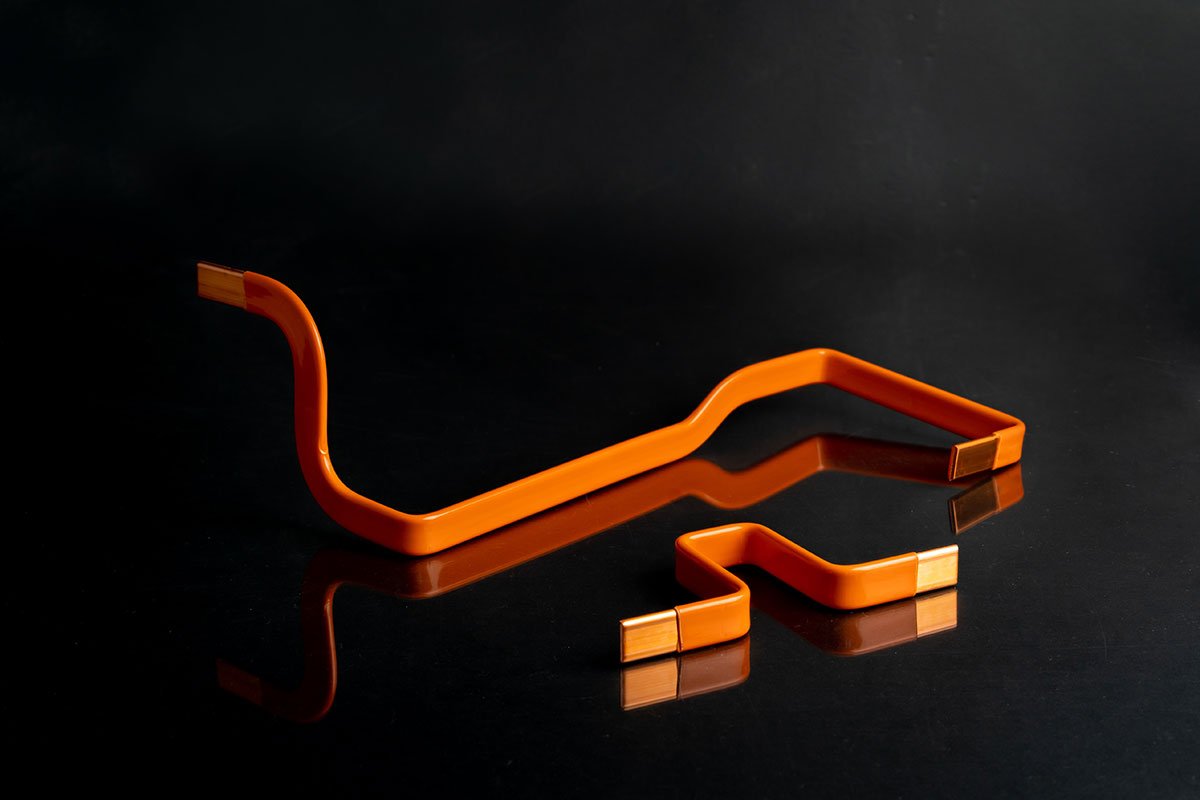Under-Bonnet Bus Bars Get The William Hughes Treatment
New technology needs new approaches and EV bus bars are no exception. But how to deliver the precision, repeatability and cost effectiveness demanded by the automotive industry? You put years’ of experience behind it, and deliver the perfect answer.
When you say the word bus bar to an engineer, their eyes will normally gravitate sideways towards a control panel or upwards to the ceiling as they search for the conduits used to distribute electricity around machines and plant.
But bus bars have an even newer home too, under the skin of new-generation electric vehicles. Battery advances and high voltages mean that bus bars are just as at home under the bonnet as they are in a control cabinet backplane, but their automotive application isn’t quite as smooth sailing as their industrial role.
To prevent short circuits, and to resist the corrosive efforts of Mother Nature, insulation and protective coverings have to be used, but very few of these bus bars are nice straight lines. Many follow convoluted paths around other components, which makes the insulation even more essential. There is also a chicken-and-egg situation. Do you bend and then coat, or do you coat and then bend?
Arguably it is easier to coat a straight blank and then bend it, as opposed to dipping or powder coating a complex geometry. But how do you make sure that any bending operations do not negatively affect the insulation? Here’s where William Hughes steps in.
As a specialist in the design and manufacture of custom-made springs, wire forms and assemblies, William Hughes never shies away from tough applications. "We do like a challenge," explains Emma Burgon, the company’s Engineering Director, "and we have always fallen back on our experience and knowledge of the mechanics, materials and processes."
In this instance the company has come up with a way to compose complex geometries out of pre-coated copper bus bars, using a bending machine in such a way that the insulation remains completely viable along the length of the bar.
Traditionally, bus bars are stamped and bent, but stamping cannot always deliver the complexity required, which is why bending machines are an attractive proposition. Using bending machines the minimum bend radius for the high edge is approximately the same as the material’s height, while the minimum radius for the small edge is approximately the same as the material’s thickness. 90° twisting is also possible for confined areas where a bend could be problematic. In all instances, the company can work with customers to help define the material cross section, the bend radii, the curve forms and the geometry possibilities based on the installation space.
Bus bars are an obvious evolution of the company's capabilities and with a few hundred years of knowledge and pedigree behind them, William Hughes will almost certainly become a leader in this field too.




